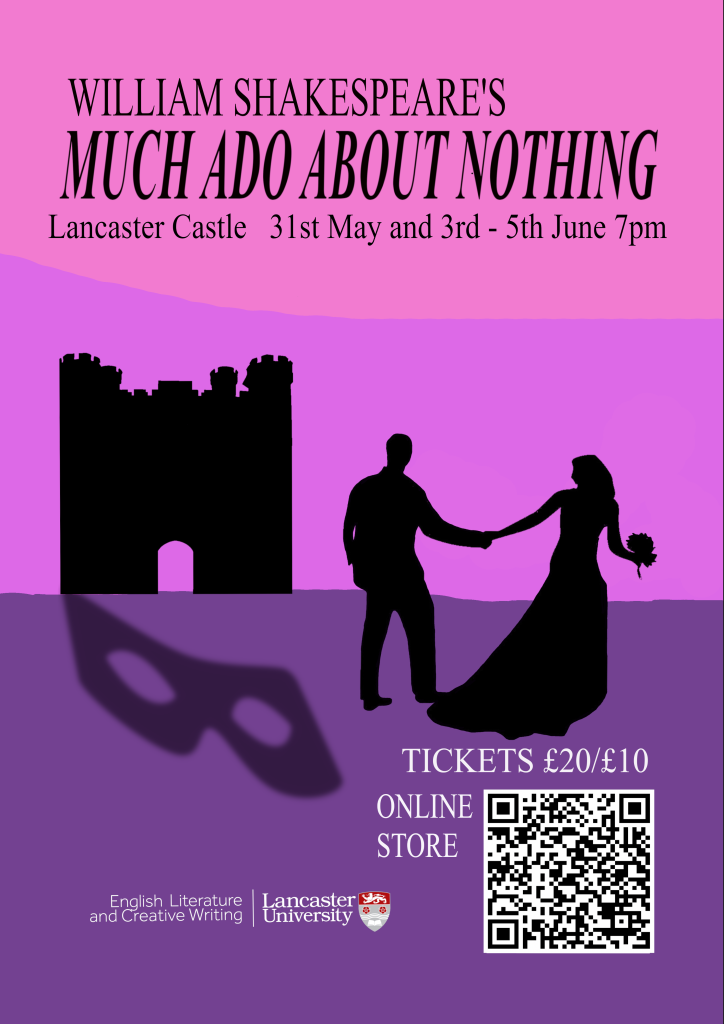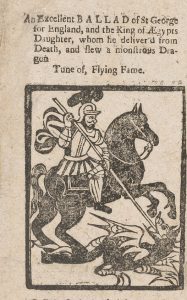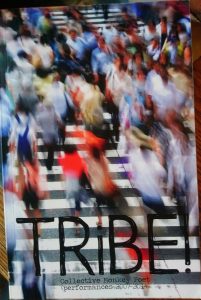An Introduction To Parts
In Early Modern Theatre (EMT), actors were not given the complete script of the play they were to perform. Instead, they received parts that were specific to their roles. This practice helped prevent Shakespeare’s plays from being stolen and was economical, considering the length of his works. Parts took on a definition beyond being the role that an actor had to embody, coming to represent the written script, often presented in a scroll that contained the actor’s lines. They omitted the lines of other characters, containing just the actor’s speeches and cues. This fragmentation surely made the process demanding for rehearsals. Join us as we take you through the process of learning parts and translating it to our rehearsals.
Our Rehearsal Process
The significant gulf in time between the Elizabethan period and the modern time means that there was some struggle adjusting to such a different style from the rehearsal practises that we are used to. During an Elizabethan rehearsal, parts would be used. That was a struggle for us to adjust because we would normally have a full script if we were performing a play using the modern style of learning roles. Much more attention must be paid when a scene is being read out as you do not know who will be saying your cue line or when they will say it. There are only a few words on the page as a cue so it’s easy to miss if your undivided attention is not focused on what is being said, as any line could end with your cue. This was especially difficult for some minor roles at times as they would not always be aware that they were in the scene and would have to scramble to find the line if our tutor indicated that they were supposed to be speaking. Personally, it was also much harder for us to pay attention and be ‘tuned in’ to the scene without a full script in front of us to follow along with what was being said and absolutely no way of telling how far into the scene we were. Our difficulty to stay tuned in was amplified especially if we were not in the scene and had with no kind of script for the scene in front of me to stop our minds wandering from what was being said.

Working With Scene Partners During A Site-Specific Rehearsal (Take Note of Our Minimal Use of Props and Set)
Within our reading of the play, particular attention was naturally turned to the title character of Henry and if he could be classed as an honourable, good king or a bloodthirsty self-centred king. The dichotomy between these side of Henry is best shown in Act Four, Scene Six. Henry mourns ‘with mistful eyes’ for his fallen comrades, demonstrating the care he possesses for the men under his rule, but within the same breath gives orders for ‘every solider kill his prisoners’.[1] Henry tells his men to commit an entirely immoral act. Whilst the emotion clearly shown over his fallen men awards him the epithet of ‘good king’, his subsequent words immediately snatch it away.
Lack of stage directions and mentioned props with the play made staging difficult but also fluid. Although each actor was provided with the list of scenes in which their character would be featured and a list of the other characters which would also appear in those scenes, there was little indication on blocking and which cue would correlate to which character. This initially made the process of performing a scene much more difficult but then allowed for the conversations between characters to flow more naturally than they perhaps would have done if each actor was simply given a conventional playscript. The use of parts forced each of us to engage with our roles. Without many stage directions to adhere to, blocking is almost completely up to the discretion of the director and, to a certain extent, the actors. This can also lead to immense differences between productions due to the amount left up to interpretation.
Learning Parts
Although detailed records of theatrical practices from the Early Modern era are scarce, we can infer some methods from Quince in A Midsummer Night’s Dream to make informed decisions on learning parts. Quince orders his fellow actors to ‘con [their parts] by to-morrow night’ before their rehearsal.[2] Each of our parts were learnt in solitude, where in the EMT, actors would commit their lines to memory and internalise their character’s passions. We also had to develop our character’s super objectives and motivations prior to assembling for a rehearsal.
Additionally, we would have to decide on the gestures and vocal delivery we would take on for our characters. This was to give space for meaningful rehearsals where each character in the play was already entirely or close to being fully realised and actors focused on ensemble work and interactions with their scene partner(s).
Cues
When trying to understand our characters, we took instruction from our speeches and cues. Cues are ‘a motive’[3] and parts must cue changes in passions. They compel the character and allow the actor to discern the reason for the action. It is the final word(s) in the preceding speech and the cue-tail represents an actor’s anticipated moment. Therefore, it was crucial for us to be highly familiar with our cues during table read because if we were on stage, we risked breaking the illusion of the play. In the EMT, actors would have to commit to memory their lines and cues as a unit.
We had the luxury of being scene partners in Act One Scene One, where we portrayed the Bishop of Canterbury and the Bishop of Ely. Our cue scripts provided an idea of what scene partners had to expect:
|
Bishop of Canterbury
|
Bishop of Ely
|
|
My lord, I’ll tell you that self bill is urged Which in th’ eleventh year of the last king’s reign was like, and had indeed against us passed but that the scambling and unquiet time did push it out of farther question.
— resist it now?
It must be thought on. If it pass against us, We lose the better half of our possession, For all the temporal lands which men devout by testament have given to the Church would they strip from us, being valued thus:“As much as would maintain, to the King’s honor, Full fifteen earls and fifteen hundred knights, Six thousand and two hundred good esquires; And, to relief of lazars and weak age of indigent faint souls past corporal toil, A hundred almshouses right well supplied; And to the coffers of the King besides, A thousand pounds by th’ year.” Thus runs the bill.
— drink deep
’Twould drink the cup and all.
|
— of farther question
But how, my lord, shall we resist it now?
— runs the bill,
This would drink deep.
— the cup and all.
But what prevention?
|
Interpreting and Transposing Parts
To achieve a coherent emotional journey, actors in the EMT needed to chart their character’s passions and transitions. Passions in the EMT became a ‘synonym for the embodying of emotion in acting’.[4] A well-rounded character comprises a spectrum of emotions, requiring the actor to identify the necessary passion for each moment in addition to textual cues and subtexts. Thus, once we had mapped the emotional journey for our characters, we had to transpose the passions during our rehearsals.
The stage demanded acting beyond the modulation of facial expressions and the voice. It also required the manipulation of the body and gestures. Therefore, body language and vocal delivery were of utmost importance for an actor’s performance to be translated to their audience.
To provide an example of how we interpreted passions, here is short excerpt of Fluellen in Act Five, Scene One, one of the characters one of us played in rehearsal, and the interpretation of the transition of his passions:
|
Speech
|
Passion
|
|
There is occasions and causes why and wherefore in all things. I will tell you ass my friend, Captain Gower. The rascally, scald, beggarly, lousy, pragging knave Pistol, which you and yourself and all the world know to be no petter than a fellow, look you now, of no merits, he is come to me and prings me pread and salt yesterday, look you, and bid me eat my leek. It was in a place where I could not breed no contention with him, but I will be so bold as to wear it in my cap till I see him once again, and then I will tell him a little piece of my desires.
’Tis no matter for his swellings, nor his turkey-cocks.—God pless you, Aunchient Pistol, you scurvy, lousy knave, God pless you.
|
(Fluellen is Welsh and thus pronounces his ‘b’s as ‘p’s.) Fluellen is very much offended by Pistol’s insult to the culture he is extremely proud of. Therefore, he is bitter and resentful that Pistol gained the upper hand on him. I would spit (not literally) and over-enunciate the words ‘The rascally, scald, beggarly, lousy, pragging knave Pistol’ to convey his disdain and drag out the insults. However, he is more hurt than angry at this point. I would also already be holding a stick and practicing hitting it. The thought of getting back at Pistol excites Fluellen. My tone would convey playfulness and malevolence in a little piece of my desires.
To Gower, still bitter.
To Pistol. Fluellen would probably be extremely unhappy that Pistol dared show his face in front of him after offending him. Fluellen has a penchant for repeating ‘lousy’ and ‘knave’, this is one of his germs (not literally.)
I would be yelling at Pistol, my body would be leaning forward. I might also shake my fists at Pistol to let him know how truly mad Fluellen is.
|
An actor in the EMT would also need to study his part to make informed decisions on transposing his speeches to the stage. We thus needed to pick the appropriate words and phrases to emphasise. Actors paced their speech according to the metre and prose, where a switch between verse and prose can indicate a change in a character’s passion. This intricate process of interpreting and performing their parts allowed actors to deliver compelling and emotionally resonant performances despite the fragmented and solitary nature of their initial preparations.
Props
Elizabethan plays often featured simple set designs and minimal props, primarily for practical reasons, as acquiring elaborate props and sets was expensive and not feasible to maintain. Isolated set pieces represented locations such as a throne constituting an entire throne room. In Henry V, this implies that ‘[p]racticable tents still afford a convenient camp background’ for the French and English camps, possibly distinguished by the respective nation’s flag.[5] We also practiced using swords, which would have complimented the character’s costumes in the camp scenes to signify their status as soldiers in a war. Often, objects and scenery mentioned in actors’ speeches were not physically present on stage, relying on the audience’s imagination to visualise the setting and props.
Our Concluding Words
The Early Modern Parts project aimed to, through our reading of a slightly abridged version of Henry V, recreate Elizabethan rehearsal practises. Albeit we could not entirely replicate the rehearsal process due to the constraints of time and the barriers that were created. Whilst it is impossible for us to entirely replicate the Elizabethan rehearsal process, our attempt gave us an insight into how Shakespeare plays would originally form and has allowed us a new avenue to explore when analysing his plays in the future.
Honey and Jenell
[1]William, Shakespeare. The Life of King Henry V (Minneapolis, MN: First Avenue Editions, a division of Lerner Publishing Group, 2016) p. 115.
[2]William, Shakespeare, A Midsummer Night’s Dream (Minneapolis, MN: First Avenue Editions, a Division of Lerner Publishing Group, 2014), p. 19.
[3]Simon, Palfrey. Shakespeare in Parts, 1st edn (United Kingdom: Oxford University Press, 2007) <https://doi.org/10.1093/acprof:oso/9780199272051.001.0001> [accessed 16 May 2024] p. 96.
[4]Palfrey, p. 313.
[5]E.K. Chambers. The Elizabethan Stage, Vol. 3 (Project Gutenberg) <https://www.gutenberg.org/cache/epub/67462/pg67462-images.html> [accessed 16 May 2024] p. 107.
Bibliography
Chambers, E. K. The Elizabethan Stage, Vol. 3 (Project Gutenberg) <https://www.gutenberg.org/cache/epub/67462/pg67462-images.html> [accessed 16 May 2024]
Palfrey, Simon, Shakespeare in Parts, 1st edn (United Kingdom: Oxford University Press, 2007) <https://doi.org/10.1093/acprof:oso/9780199272051.001.0001> [accessed 16 May 2024]
Shakespeare, William, A Midsummer Night’s Dream (Minneapolis, MN: First Avenue Editions, a Division of Lerner Publishing Group, 2014)
Shakespeare, William, The Life of King Henry V (Minneapolis, MN: First Avenue Editions, a division of Lerner Publishing Group, 2016)
Smith, Hal H. “Some Principles of Elizabethan Stage Costume.” Journal of the Warburg and Courtauld Institutes, vol. 25, no. 3/4, 1962, pp. 240–57. JSTOR, <https://doi.org/10.2307/750809>. [accessed 16 May 2024]




You must be logged in to post a comment.